By Charles Platt and Mike Darwin
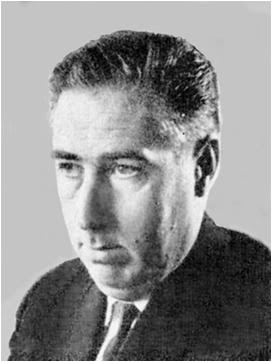 Ev Cooper (at left)
Ev Cooper (at left)
“The first meeting of Ev Cooper’s that we went to, he held in Washington, D.C., at a restaurant at eight o’clock in the morning on New Year’s Day. And of course, this was my first lesson in fanaticism because Saul Kent, Karl Werner and I showed up at it. Karl was skinny, average height; he was a photographer and a student of industrial engineering at the Pratt Institute who was also very interested in cryonics. Karl began to attend the meetings at the bar.”
“So it came down to this: shall we form our own society? My recollection is that we came to this in Karl Werner’s apartment. His apartment was a large room opposite the Pratt Institute in Brooklyn. It had high ceilings, and he’d built himself a loft, he slept up there on a bunch of mattresses. Of course, this was the height of the hippie period; he was always dragging girls up there. He always had half-naked girls hanging around. I guess he was in his early 20s, going to Pratt Institute. I always thought he had the room that Lincoln Rockwell had.” [1]
The Cryonics Society of New York
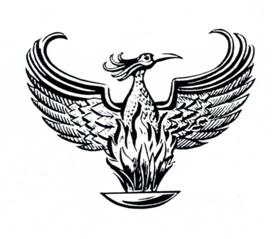
“Saul was a student at Hunter College, what was he studying, some fool thing.[2] He was going to school because he didn’t want to work, and spending most of his time at the beach.”
“I said I would incorporate a tax-free society because I was a lawyer. And what do we call it? Karl wanted to design the stationery, and Saul wanted to write letters on it, so we had to have a name. Karl said ‘Cryonics Society,’ it just came out. So, I went into the office and scraped together all the papers and went through the process of incorporating, and low and behold, we had the Cryonics Society of New York (CSNY). To get tax-free status, we had to elect officers. So I guess there were five of us: me, Karl Werner, Sutton, Saul, and the wrestler, Harold Costello. So we started talking about who should be president and vice-president. Well, Frank, the wrestler said, Jimmy’s going to be president. It never occurred to him that Jimmy wouldn’t be president. Saul and Karl were easily bullied, I could see that. So, we made Jimmy Sutton president. And now we could start typing letters and doing things. Saul wrote endless letters to people.”
“A couple months went by, and Sutton went on a late-night radio show. And the man couldn’t say two coherent words. Forget about it! And then there was the prospect of a TV show. Well, we couldn’t have Sutton doing that. So we had a brilliant idea, to put Ettinger on it. Well, Sutton couldn’t argue against that, so reluctantly—he agreed. We met Ettinger in a restaurant in some big hotel in New York. Sutton made a big stink, but of course we had found out, he was no big business man, he was just a security guard at Macy’s. But he had such pretensions. Complaining about how shabbily we dressed – Sutton had this fancy attaché case and he’d come on like a respectable gentleman. He opened the case one time and out walked a cockroach this big (indicates with his hands it was about a foot long). Clank, clank, clank—I mean you could hear its armor rattling. Nobody said a word.”
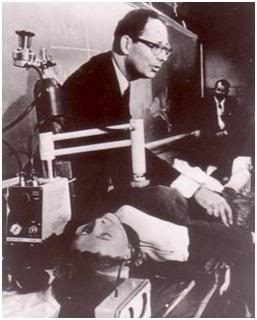 Robert Ettinger on the Tonight Show in 1966 (Robert Nelson in background). Photo by NBC TV.
Robert Ettinger on the Tonight Show in 1966 (Robert Nelson in background). Photo by NBC TV.
“Ettinger would go on these TV shows where they had people like Zsa Zsa Gabor and Buddy Hackett, and they’d ask him things like, ‘Are you going to be frozen with your clothes on, or your clothes off?’ They were really ridiculous shows, just poking fun at the idea. He’d be appearing with people who wanted to put pants on horses, that kind of thing. And he’d say, ‘well, at least it’s getting the idea thrown out there,’ which was true. And he did get letters. He would pass on names of people who had written to him in the area.”
“TV – everyone remembers their first TV show. It’s a big event. You think, well, now everything’s going to go. But of course it doesn’t go. So there was a lot of excitement.”
“There weren’t organized meetings as such. They were slowly shifting from the bar to Karl Werner’s apartment at 306 Washington Avenue, and we never had more than four or five people. Most of them were behind on their rent. We really had no idea of the form that that this thing should take. Should we charge $5 a month? Should we go for a broad-based approach with lower fees? And Sutton didn’t know what he was doing. He wasn’t the least bit articulate. He couldn’t write or read, as far as I could tell. He used Saul as his personal secretary. So, he had to go. Saul and I went and changed the address of the society, and told Sutton that that was it, he wasn’t President anymore. There were three of us and two of them, and that was that. Oh, he threatened to sue us, and the fight went on back and forth, and he wrote Ettinger, and Ettinger took his usual noncommittal position. Sutton started crying about all the money he’d invested – I think in the end I gave him $300, or something, just to go away.”
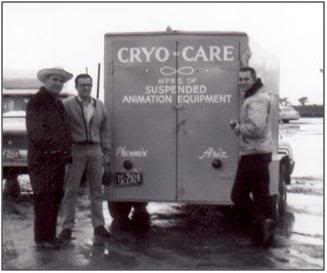 Ed Hope (left in hat) and Ted Kraver (right holding apple) standing next to the Cryo-care Equipment Corporation’s ‘baby blue’ trailer used to move the first Cry-Capsule, model CC-101 to the LES conference in Washington, D.C. in 1966 .Photo by Curtis Henderson.
Ed Hope (left in hat) and Ted Kraver (right holding apple) standing next to the Cryo-care Equipment Corporation’s ‘baby blue’ trailer used to move the first Cry-Capsule, model CC-101 to the LES conference in Washington, D.C. in 1966 .Photo by Curtis Henderson.
“Saul provided the sinews of the organization. He wrote all the letters. He did practically all the work and when the newsletter started coming out. He wrote it single-handedly.”
“Then we organized a meeting somewhere in a school; maybe in 1965. We put out fliers, and we got 20 or 30 people. We got Ettinger to come. We paid his way. I was making good money then. We got people vaguely interested. But the hard core was still just me and Saul and Karl, and the whole thing was centered on Karl’s apartment.”
“At this point, I could see we were talking about two different concepts of an organization. Saul and Karl and I wanted an activist organization, really doing something. But most of the people who showed up were concerned with whether you were going to serve tea at the meetings, or whatever. We still had the problem that no one was interested in building the tanks. Union Carbide wanted $250,000 to build a tank – that history is a novel in itself.”
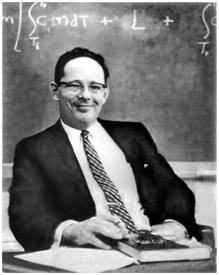 Robert C. W. Ettinger, circa late 1960s.
Robert C. W. Ettinger, circa late 1960s.
“Meanwhile, Ettinger kept appearing on TV shows, and it seemed every couple of months he’d come up with something that was a sure thing. They were going to freeze this person, or that; and it was really going to happen. One of the people he had hoped to freeze was Dandridge M. Cole. He was research director of General Electric. He was one of the first people to suggest space colonies – the hollowed-out asteroid, that type of thing: a rotating cylinder in space. He was a friend of Ettinger’s, and he said he wanted to be frozen. But he had a heart attack when he was forty-four, and his family went ahead and buried him. They said something about not wanting to disturb the children. So, it slowly came into our consciousness that the world out there didn’t think this was such a great idea at all. In fact, the vast majority of people thought it was a grotesque idea, a ridiculous idea. And certainly when somebody had died, talking about freezing them was like spitting on the flag; even worse than that. So our perceptions started to change. Ettinger went on with his rhetoric about freezing the first man, but –”
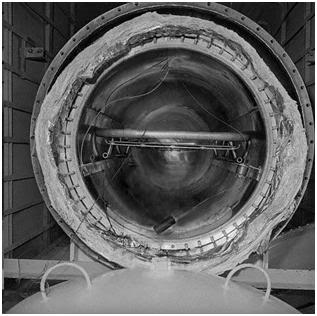 The Cryo-Care Model CC-101 Cryo-Capsule at the Life Extension Society (LES) Conference in Washington, D.C. in 1966. Photo by Henry Groskinsky.
The Cryo-Care Model CC-101 Cryo-Capsule at the Life Extension Society (LES) Conference in Washington, D.C. in 1966. Photo by Henry Groskinsky.
“Karl had a movie camera, and he went out and made movies. When LES had its conference in Washington, D. C., there was to be a press conference where Ed Hope would put this dog named ‘Bell,’ that he’d frozen in the Cryo-Care tank. The idea was to create publicity, since no human had yet been frozen; sort of like the Russians did with the dog Laika that they put into orbit. Karl decided to make a movie of Ed Hope putting that frozen dog into the tank.[3] But instead of a bunch of panting reporters, here we were at eight o’clock in the morning, and the police and the SPCA show up! So, Ettinger, I, and some other people went out to face the police. And where was the dog? I guess it was in the tank. Anyway, suddenly Ed Hope gets in his car, and zoom – he’s gone, taking the tank with him. So, nobody ever found the dog. To this day, I’ve never been able to find out what happened to that dog.”
Fraud and Fraudsters
“Ettinger would go on TV, and he’d hold up pictures that people had sent him, and he’d say, ‘these people in Kansas City, Missouri are building a giant facility and will soon be freezing bodies at a cost almost everyone can afford.’ He was such an optimist. The fact was all these people were just looking for money. And there was no money. In our organization, it was basically our mortician Fred Horn’s and my out-of-pocket money, and Saul’s brains. And I was getting into my first divorce. In the meantime, fate intervened. Karl Werner was an amateur photographer, and one night he’s taking pictures of this girl Glenda, whose stark naked, she’s his model. Glenda lived across the street from Karl. He said she climbed in the window naked, and he wasn’t the same after that. He had a blow-up bigger than life size photo of her naked, pasted to his ceiling. There it was, you’d come in, and look up – Well, I knew one of us was done for right there. So, Glenda joined our crew as a secretary, and she had one thing that was absolutely essential. She had a brand-new IBM Selectric typewriter. This was the instrument that was going to put out the first newsletter. “
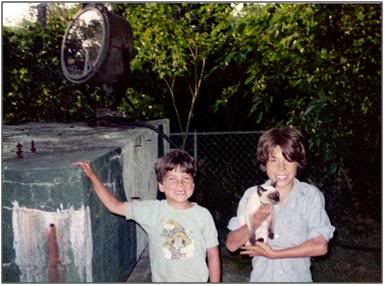 Henderson’s two son’s by his first wife, Janet; Robert (Robbie) at left and James (Jamie) at right, above, August, 1972. Photo by Mike Darwin.
Henderson’s two son’s by his first wife, Janet; Robert (Robbie) at left and James (Jamie) at right, above, August, 1972. Photo by Mike Darwin.
“Meanwhile, I was getting into the divorce; my wife went away to Florida and took the kids, the usual crap. And I’d just bought that Buick out there.[4] And I was ready to hit the road. In the meantime, in those days for about $12.95 you could get a credit check.[5] I used to do it all the time when I worked for the insurance company. And amazing things came back.”
“There was a guy named Leonard Gold, in Springfield, Ohio. He said things like, ‘in two weeks we’re going to have the first freezing, on color television, and the capsule’s going to be consecrated by the Pope.’ So, the two weeks would come and go, and nothing would happen. Gold had his sidekick, Stanley Milgrim. And they sent out these crude airbrushed drawings of the big facility they were building in Springfield. Saul wanted to get in the car and go to each of these places and check them out. So that’s exactly what we did. We left on our first coast-to-coast trip in October of 1966. Ettinger gave us the names of people all across the country, and one of them was this TV writer, Dick Jones.”[6]
 Artie Shaw, was a jazz clarinetist, composer, and bandleader. He is widely considered to be one of the greatest jazz clarinetists of his time.
Artie Shaw, was a jazz clarinetist, composer, and bandleader. He is widely considered to be one of the greatest jazz clarinetists of his time.
“Jones was by no means the only celebrity or Hollywood type who was interested in cryonics at that time. Artie Shaw, Steve Allen and Peter Sellers had written to Ettinger, saying they were interested in getting frozen. One of the really interesting things we learned on that trip was why none of those guys ever got involved. We met with this guy named Sam Cavnar. He lived in a swanky apartment on Vine, right near the Capitol records building. Cavnar was a wealthy, influential businessman and Hollywood type who had floated a very successful precious metals consortium, AmeriCoin – gold was still illegal to own in those days because of that communist FDR. Anyway, while Cavnar was not eager to talk, his wife was really pushy and urged him to ‘come clean’ with what he knew. “
“According to Cavnar, Artie Shaw and Steve Allen had been disillusioned about cryonics by Milgrim and Gold – both of whom had been referred to them by Ettinger. Canvnar said that Allen and Shaw had put up substantial sums of money which had disappeared into thin air, along with Milgram and Gold. A guy named Dr. Benjamin Schloss took $5,000 for supposed research in cryonics, from Peter Sellers and Artie Shaw. It was all very sad. I wonder how things might have turned out if those people had been treated with respect.”
“Ettinger had a lot of contacts with wealthy people, but he never had anything to show them. When Alcor came into existence, maybe Ettinger’s friends would have donated some money. But Mike Darwin caused a rift between Alcor and Ettinger. With Ettinger, it was all talk, all blue sky. He didn’t really start his own operation till long after Alcor existed.”
“Ettinger had spoken to the man who was the head of research at Union Carbide. At that time Union Carbide was one of the few places that made cryogenic tanks. I had Union Carbide stock so I went to their stockholders meeting. I asked them if they would make tanks for storing people, and they didn’t answer my question.”
“Ettinger, sitting on these ridiculous TV shows with his celluloid collar, trying to look respectable. We also learned, and were later able to verify, that the Juno tank was in fact made by an Ohio cryogenics and engineering firm, Cryo-Vac Company, in Columbus. Gold had also been in touch with the management of Ryan Industries, a large aeronautical engineering firm that had just merged with the even bigger Cosmodyne. He had persuaded them to do some research and was trying to get them involved in making tanks. Since he lied outrageously and apparently and misappropriated money, all these business people and celebrities were completely soured on the idea of cryonics.”
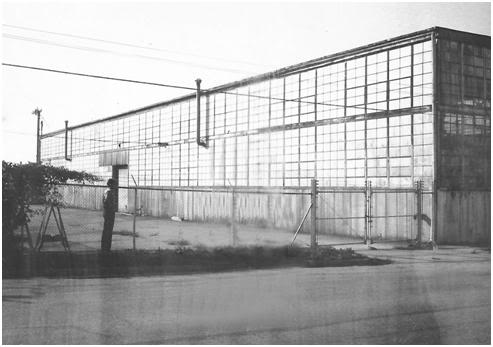 Saul Kent standing in front of the Patton Machine Works building used by Leonard Gold and Stanley Milgram to house Juno, Inc. of Springfield, Ohio.; the source of the “Springfield Incident.” Photo by Curtis Henderson.
Saul Kent standing in front of the Patton Machine Works building used by Leonard Gold and Stanley Milgram to house Juno, Inc. of Springfield, Ohio.; the source of the “Springfield Incident.” Photo by Curtis Henderson.
“Ettinger was completely uncritical in referring these con men and Mr. Wonderfuls, even to highly influential, wealthy and important people. He had no sense of responsibility whatsoever. Jack the Ripper could show up, and if he had a good line, fancy letterhead and drawings of non-existent facilities, he was immediately put in touch with the highest quality and most important and influential prospects. It was a disaster. People with that kind of wealth and public influence talk to each other, and it didn’t take any time at all before the whole lot of ‘em had the clear impression that cryonics was fraud and bunkum; just a bunch of con men endorsed by the guy who was the public father and the public face of the of the whole movement.”
 End view of the first dewar made for the cryogenic storage of humans. Photo by Curtis Henderson.
End view of the first dewar made for the cryogenic storage of humans. Photo by Curtis Henderson.
“Ettinger didn’t approve of us (Saul and I). For one thing, we thought nothing of tapping phones, breaking into places, doing whatever was necessary to find out the truth. Ettinger was the opposite; he never budged from his place in Michigan to find out anything. Even now, he’s never seen Alcor. We had to more or less kidnap him to see the place we built on Long Island. Anyway, he was super-respectable; he took a dim view of us. Cryonics was to suffer for that later on.”
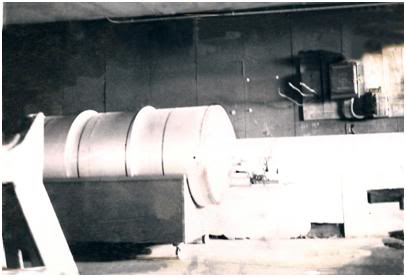 Side view of the Juno, Inc., dewar in Springfield, Ohio. Curtis Henderson.
Side view of the Juno, Inc., dewar in Springfield, Ohio. Curtis Henderson.
“We went to Springfield, Ohio and sure enough, they were making some sort of tanks. I put on my old clothes and we broke into the building at night; there was a tank there, but there was no evidence of any bodies. We were wandering around Springfield; this guy comes up in a car. We had gone to this address that Gold had given us, Patton Machine Works, and it was a shoe machine factory that had gone into bankruptcy. And through the credit check, we began to get the picture. Gold made a habit of buying up companies and putting them through bankruptcy. He sold all the assets. And this was his business.”
Interior of Patton Machine Works factory building in Springfield, Ohio. Photo by Curtis Henderson.
“Gold was quite a con man. He’d convinced a local journalist that he would get the Pulitzer Prize for writing this story. So he got all this publicity, with pictures of tanks—but this thing never would have worked. Anyway, we broke into the factory at night; we even have some Polaroid pictures. And there was an old tank in there covered with dust. No facility at all. So, we went on with our travels, to Kansas City, Missouri, where there was a funeral parlor, a beautiful chapel on a hill: The Christian Memorial Chapel. There was only one guy there in this whole huge place and he tells us that ‘only Mr. Alden’ can answer our questions and ‘he isn’t there and doesn’t like to talk on the phone.’ For not wanting to talk, he had a lot to say. He told us they had ‘time elector units’ that would take the body down to 0oC in a flash, and that they were underway with construction of a cryogenic mausoleum that would hold 40,000 bodies; that they were in touch with cryobiologists and cryonics scientists all over the world, some of whom would be coming to work for them. It was bullshit, bullshit. We never met Mr. Alden and that was the last we ever heard of ‘Cryo-Life of Kansas City.’
Footnotes
[1] George Lincoln Rockwell (March 9, 1918– August 25, 1967) was a Navy Reserve Commander and founder of the American Nazi Party. Rockwell was a major figure in the Neo-Nazi movement in the post-war United States, and his beliefs and writings have continued to be influential among white nationalists and neo-Nazis. After WWII ended, Rockwell became a commercial artist. He applied to the Pratt Institute in Brooklyn, New York, and was accepted for the following year. Rockwell and his wife moved to Boothbay Harbor, Maine, and in spring 1946, he built a photography studio and found work painting commercial signs. Later that year, they moved to New York City, where Rockwell started his studies at Pratt. See: http://en.wikipedia.org/wiki/George_Lincoln_Rockwell. MD
[2] Saul Kent was a physical education major and received his B.A. in PhysEd from Hunter College. MD
[3] This was the Life Extension Society (LES) Conference in Washington, DC in 1966. This is a Bettman Archive photo of the dewar (the very first dewar) at that Conference. Karl Werner did not rent a trailer and transport the dewar; it was brought out in the “baby blue” Cryo-Care trailer expressly for display at the conference. The dog was named “Bell” and to this day nobody will talk about her (not even Ted Kraver). MD
[4] The Buick features prominently in a blackly ironic article on Henderson and cryonics that appeared in the ‘Ladies Home Journal’ in 1968; unarguably the best media article ever written about Henderson, and one that completely captures his demeanor and personality. It was entitled “No, Thank You, I’d Rather Not Live Twice” and authored by Lois R. Chevalier (Ladies Home Journal, Volume 86, March 1969; Page 68-69.). MD
[5] The company was the Patton Machine Works. More importantly by far, this was no credit check he was having run. He was using the resources of his employer to commission a full scale Pinkerton (private) investigation of Milgram & Gold. This report survives and is now in the Digital Cryonics Archives. MD
[6] Richard (Dick) Clair Jones was actually an actor/writer at this time. MD

after reading all about history of cryonics as in this report would like to say curtis and saul were great people-sorry i was called a dumb security guard -never worked in macys.i brought together all to form cryo of nyc-made endless calls to saul curt etc to get things going-have all documents etc from past-made many speeches at meetings-never got money mentioned-i again say it was curtis who did all the leg work and thought the best of him-a long list of facts are now of no value-wish best to alcor great company-and blog great idea jim
Jim, it is good to hear from you, and I’m very glad to hear you’re still around. Very few are, from those days. Curtis was, well, Curtis! You should see some of the things he said about me! He loved the dramatic, and he both saw and lived life like Shakespeare’s Richard III. I know that it was in no small measure because of that hyperbolic sense of life (which was often transformed into wild actions) that I learned so many of the valuable lessons that I did from him. When I first met him, I was just about equally repulsed/horrified, as I was fascinated. The fascination won out ;-). I was just a hick kid from the Midwest who had grown up in a provincial and god-fearing neighborhood, and I walked into this madhouse, with a picture of Adolf Hitler over the fireplace, and another of FDR decoupaged onto the inside of the toilet bowl lid – and that was just the beginning! I would really like to talk to you about the early days of cryonics in New York. For one thing, I’ve been (unsuccessfully) trying to recover every bit of information about Steven Mandel that it is possible to get. I’ve tried to find additional photos of his cryopreservation, and spent many hours trying to track down Anthony Bregman. May I write to you and get your contact information? –Mike Darwin